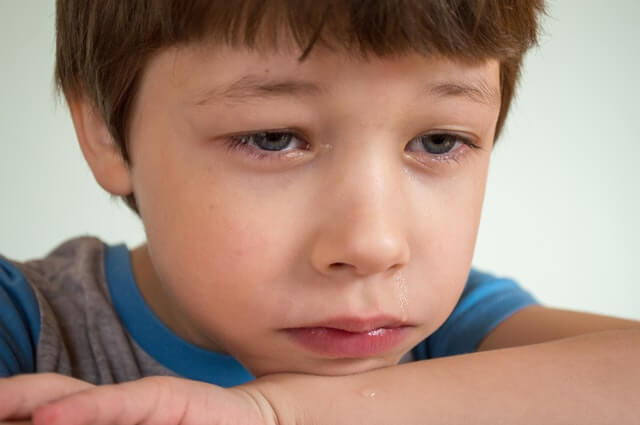In the age of the COVID-19 pandemic, a constant burden is present on humanity’s shoulders. The fear of infection, necessary social isolation, and altered home-living practices have disrupted the lives of adults and children alike. Families across the country are still adapting to the evolving changes in daily life caused by the COVID-19 pandemic.
Despite COVID-19 itself not heavily impacting children’s physical health, its pandemic has shown to have several adverse effects on pediatric health. In a situation that involves constant change, such as a pandemic, children are likely to develop unpleasant symptoms. The altered routine, limited social interaction, imbalanced nutritional intake, restricted physical activity, and frequent pandemic-related news and stress result in children becoming a vulnerable group during the pandemic.

Medical professionals have reported an escalation of physical symptoms, such as headaches, tummy aches, and panic attacks, experienced by healthy children that have not been infected by the coronavirus. Mental health issues have also increased in children during the pandemic.
This article will dive into the four effects the COVID-19 pandemic has on children’s health.
1. Increase in Headaches and Migraines
Migraines are not just for adults. Children are subject to migraines along with tension and chronic headaches. Migraines are prevalent in about 10% of children ages between 5-15 and up to 28% of adolescents. Also, headaches are one of the most common somatic complaints in children.
Migraine can be considered a disorder of psychobiological adaptation where internal and external environmental factors interplay with a genetic predisposition. Internal and external environmental influences include hormonal, psycho-emotional, psycho-social, climatic, dietary, or other factors.
In children, signs of the severe, occasional headache include not wanting to eat, feeling nauseous, vomiting, looking pale, acting grouchy, etc. Most children’s migraines end within two hours or with the help of medication.
Psychological stressors, such as the pandemic and all things related to it, are potential triggers involved in recurring migraine episodes and headaches in children. In one study, pediatric patients with headaches were asked to fill out a questionnaire. This questionnaire helped identify any changes in headache characteristics and lifestyle factors that occurred after the beginning of the pandemic.
According to the results, chronic or daily headache disorders increased from 30% pre-pandemic to 49% since the pandemic started. Constant daily headaches also rose from 20% to 32%. In addition, about half of the patients, 46%, reported their headaches to be worse after the start of the pandemic. On the opposite hand, it was also found that episodic headaches declined from 70% to 51%.
According to Cleveland Clinic, the COVID-19 pandemic contributes to the increase of stress headaches children are experiencing. This increase is particularly prevalent with the back-to-school stress children face as they are experiencing more learning challenges and a lack of stability in the academic and social environments.
2. Increase in Obesity
COVID-19 isn’t the only pandemic humans are facing. Obesity is a whole pandemic all on its own and is a major health concern in the United States. Around one in six children are obese. Childhood obesity is a greatly dangerous medical condition that sets children on the path to health problems that were once known to be adult only problems, such as high cholesterol, diabetes, and high blood pressure. Obesity in children can also lead to depression and poor self-esteem.
The COVID-19 pandemic causes significant changes in children’s lives, including alterations in play, socialization, nutrition, sleep, and screen time. With the schools closed, many children lost their access to nutritious food, social networks, and mandatory physical activity. They became restricted to their homes with increased stress and screen time, irregular mealtimes, disruptions in family income, lack of physical activity opportunities, and less access to nutritious foods.
These consequences of the pandemic have led to unhealthy weight gain in children and an increase in the prevalence of childhood obesity. According to the CDC, the body mass index (BMI) of 432,302 persons aged 2–19 years has approximately doubled after the start of the pandemic. Those who experienced the greatest increase in BMI were persons with pre-pandemic overweight or obesity.
According to a study with 2111 young participants, the number of meals and their frequency increased by 50% during the pandemic. That is why, to prevent excessive weight gain, healthy eating behaviors and exercise habits should be encouraged.
3. Increase in Mental Health Problems
With change and uncertainty comes troubled mental health, especially in children. Social isolation, constant exposure to COVID-19 information, parental stress, changes in routine, lack of physical activity, increased screen time, and perceived risks are severely unpleasant to children, if not traumatizing. Such factors might trigger symptoms of mental health issues in children.
During the COVID-19 pandemic, anxiety, depression, and mood disorders were the most common mental health issues reported by children. The dramatic changes in their lives along with differences in parental behaviors have shown to be perceived as threats by children and a cause for anxiety. Anxiety can often manifest itself as physical symptoms.

Parental stress is one of the factors responsible for negatively affecting children’s emotional and mental health during the pandemic. In addition, the financial hardships and stress that many parents and families have faced during this time have led to a greater risk of child abuse and neglect.
In a study conducted in Italy and Spain with 1143 parents as participants, it was found that 85.7% of their children experienced changes in their emotional state and behavior during quarantine. Common symptoms included nervousness, restlessness, irritability, boredom, loneliness, worry, and uneasiness.
4.Risks on Child Development
Child development refers to the physical, language, psychological, and emotional changes in a person from birth to the beginning of adulthood. Though data is still scarce, the pandemic could be causing potential risks to the development of children.
The developmental risks due to the pandemic could be caused by confinement, increased parental stress, risk of illness, among other factors. The situation could become an adverse childhood experience that generates stress. This could lead to possible losses of brain development and developmental delays.
Final Thoughts
A child doesn’t have to contract COVID-19 to be affected by it. The pandemic itself could have many adverse effects on children’s health and well-being. The COVID-19 pandemic has been shown to increase the risk of headaches and migraines, childhood obesity, mental health issues, and child development issues in children.


